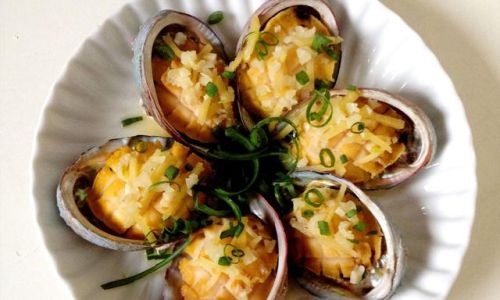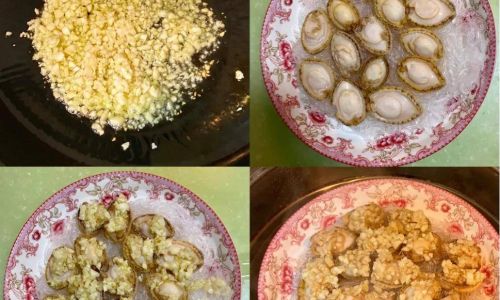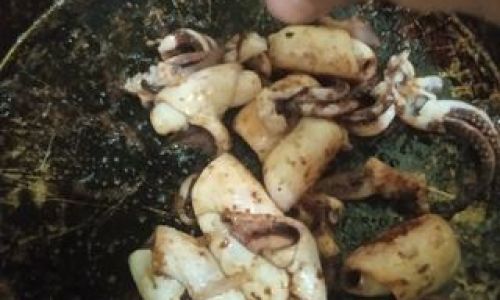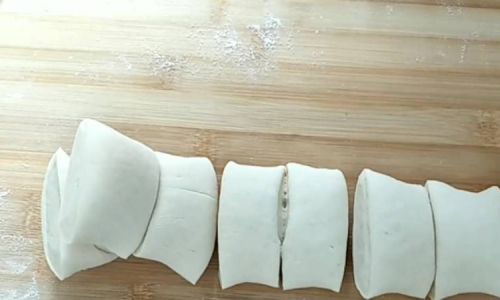Steaming abalone is a culinary practice that demands precision, patience, and a deep understanding of the ingredient’s unique properties. Abalone, a prized seafood delicacy renowned for its tender texture and briny sweetness, requires careful handling to achieve optimal results. One of the most frequent questions among home cooks and professional chefs alike is: How long should abalone be steamed once the water boils? This article delves into the science, techniques, and cultural nuances of steaming abalone, providing a comprehensive guide to mastering this delicate cooking method.
The Anatomy of Abalone: Why Timing Matters
Abalone is a marine snail clinging to rocky coastal shores, its muscular foot prized for its meaty texture. Unlike fish or shellfish, abalone’s flesh is dense and low in fat, making it prone to overcooking. When exposed to high heat, its proteins coagulate rapidly, transforming from tender to rubbery within minutes. This sensitivity underscores the importance of precise timing. The goal of steaming is to retain the abalone’s natural moisture while gently denaturing its proteins to achieve a velvety, melt-in-the-mouth consistency.
Preparing Abalone for Steaming: The Foundation of Flavor
Before even considering cooking time, proper preparation is non-negotiable. Fresh abalone should be scrubbed vigorously under cold water to remove sand, algae, and debris from its shell. For those purchasing pre-shucked abalone (a common practice in many markets), rinsing the meat under running water and patting it dry with paper towels is essential. Some chefs advocate lightly scoring the flesh in a crosshatch pattern to ensure even cooking and to allow seasonings to penetrate deeply. However, this step is optional and depends on personal preference.
The Steaming Process: Equipment and Environment
The choice of steaming apparatus significantly impacts cooking time. Traditional bamboo steamers, favored in Asian cuisine, offer gentle, even heat distribution due to their porous structure, which allows steam to circulate freely. Modern stainless-steel steamers, while efficient, may require slightly shorter cooking times due to their ability to retain higher temperatures. Regardless of the tool, the water level should be sufficient to generate steam for the entire cooking duration without touching the abalone—direct contact with boiling water will toughen the meat.
Timing Guidelines: Size Matters
The golden rule of steaming abalone is: Adjust time based on size and thickness. A general framework exists, but flexibility is key. Here’s a breakdown:

- Small Abalone (4–6 cm in diameter): 3–4 minutes after water boils.
- Medium Abalone (6–8 cm): 5–7 minutes.
- Large Abalone (8+ cm): 7–10 minutes.
These timings assume the abalone is placed in a single layer, not overcrowded, and the steamer lid remains tightly sealed throughout cooking. Overcrowding traps excess moisture, leading to sogginess, while a loose lid allows steam to escape, prolonging cooking time unpredictably.
The Science Behind the Clock: Heat and Protein
Abalone’s collagen-rich flesh responds to heat in two stages. Initially, temperatures between 60–65°C (140–149°F) cause collagen to contract slightly, expelling moisture. This is why undercooked abalone feels tough. As heat increases to 70–75°C (158–167°F), collagen breaks down into gelatin, tenderizing the meat. However, exceeding 80°C (176°F) risks over-denaturing proteins, resulting in a chalky texture. Steaming’s moderate heat (around 100°C/212°F at sea level) strikes a balance, but timing must be exacting to halt cooking at the peak of tenderness.
Testing for Doneness: The Touch Test
Visual cues are unreliable with abalone. Instead, rely on touch:
- Undercooked: Firm to the touch, with a rubbery resistance.
- Perfectly Cooked: Tender but slightly resilient, like a well-marbled steak.
- Overcooked: Mushy, with a lack of spring-back when pressed.
For novices, a toothpick test can help: Insert a toothpick into the thickest part of the abalone. It should meet minimal resistance but not glide through effortlessly.

Enhancing Flavor: Seasonings and Accompaniments
While abalone’s natural taste is exquisite, complementary flavors elevate the dish. Common additions include:
- Ginger and Scallions: Classic in Chinese cuisine, these ingredients counterbalance the abalone’s brininess.
- Soy Sauce or Oyster Sauce: A light drizzle adds umami depth without overwhelming.
- Butter and Herbs: A Western twist, often paired with garlic and parsley.
However, seasonings should be applied after steaming to prevent burning or bitter flavors during cooking.
Common Pitfalls and How to Avoid Them
- Oversteaming: The most frequent error. Use a timer religiously, and check doneness 1–2 minutes before the estimated time.
- Inconsistent Heat: Fluctuating temperatures disrupt collagen breakdown. Maintain a rolling boil throughout.
- Skipping Resting Time: Allow abalone to rest for 2–3 minutes post-steaming. Residual heat continues the cooking process gently.
Advanced Techniques for Enthusiasts
For those seeking culinary refinement, consider these methods:
- Cold Start Steaming: Placing abalone in a cold steamer and gradually heating the water prolongs collagen breakdown, yielding exceptional tenderness. Add 2–3 minutes to standard timings.
- Wine-Infused Steam: Adding white wine, sake, or Shaoxing wine to the steaming liquid imparts subtle aromatic notes.
- Dual-Texture Presentation: Steam abalone whole, then slice it thinly just before serving to preserve juiciness.
Cultural Perspectives on Steaming Abalone
In Chinese cuisine, steamed abalone symbolizes prosperity and is a centerpiece at banquets. The dish is often garnished with glossy, concentrated sauce made from the steaming liquid, thickened with cornstarch. In Japanese cuisine, abalone (awabi) is frequently grilled post-steaming to add caramelization, a technique known as aburi. Meanwhile, Mediterranean chefs might pair steamed abalone with saffron-infused aioli or roasted vegetables.

Troubleshooting Guide
- Tough Abalone: Overcooked. Reduce time by 1–2 minutes next attempt.
- Soggy Texture: Overcrowding or insufficient heat. Ensure ample space between pieces and a tight-fitting lid.
- Bland Flavor: Under-seasoning. Marinate abalone briefly in a mixture of soy sauce, mirin, and ginger before steaming.
Beyond Steaming: Creative Applications
While steaming is revered for preserving abalone’s purity, leftover steamed abalone can be repurposed creatively:
- Abalone Fried Rice: Dice and toss into rice with peas, carrots, and scrambled eggs.
- Abalone Tacos: Slice thinly and serve on corn tortillas with salsa verde and avocado.
- Abalone Consommé: Simmer the steaming liquid with aromatic vegetables for an elegant broth.
Sustainability Note: Ethical Sourcing
As demand for abalone grows, overfishing has endangered wild populations. Opt for farmed abalone whenever possible. Certified sustainable options, such as those bearing the Aquaculture Stewardship Council (ASC) label, ensure minimal environmental impact.
Conclusion: The Zen of Steaming
Steaming abalone is an exercise in mindfulness—a dance between fire, water, and time. While the question “How long?” has a technical answer, the true art lies in observing, adapting, and respecting the ingredient’s delicate balance. Whether you’re preparing a feast for guests or a quiet meal for one, mastering abalone’s steaming time transforms a simple act of cooking into a meditative ritual. So next time you hear the water boil, set your timer, trust your instincts, and savor the reward of perfection.




0 comments